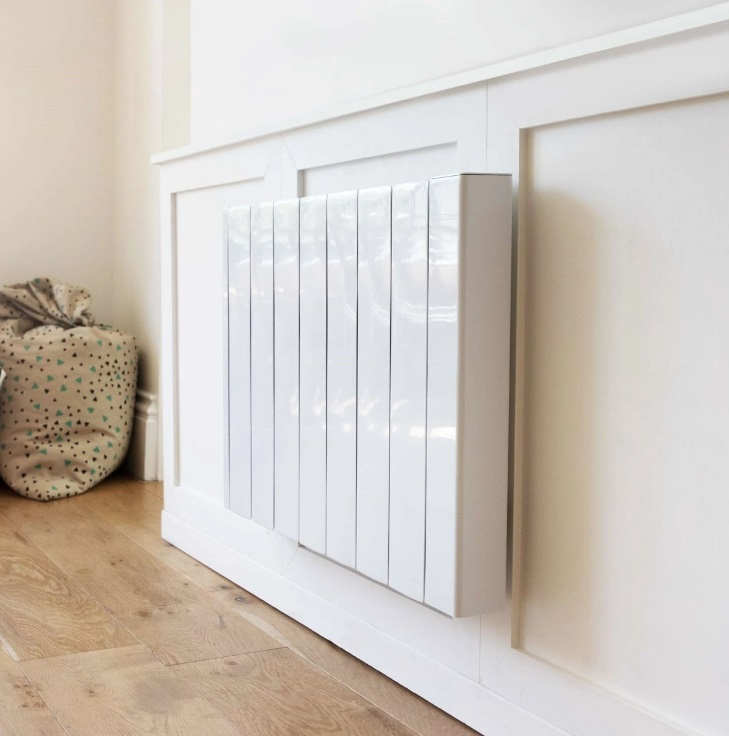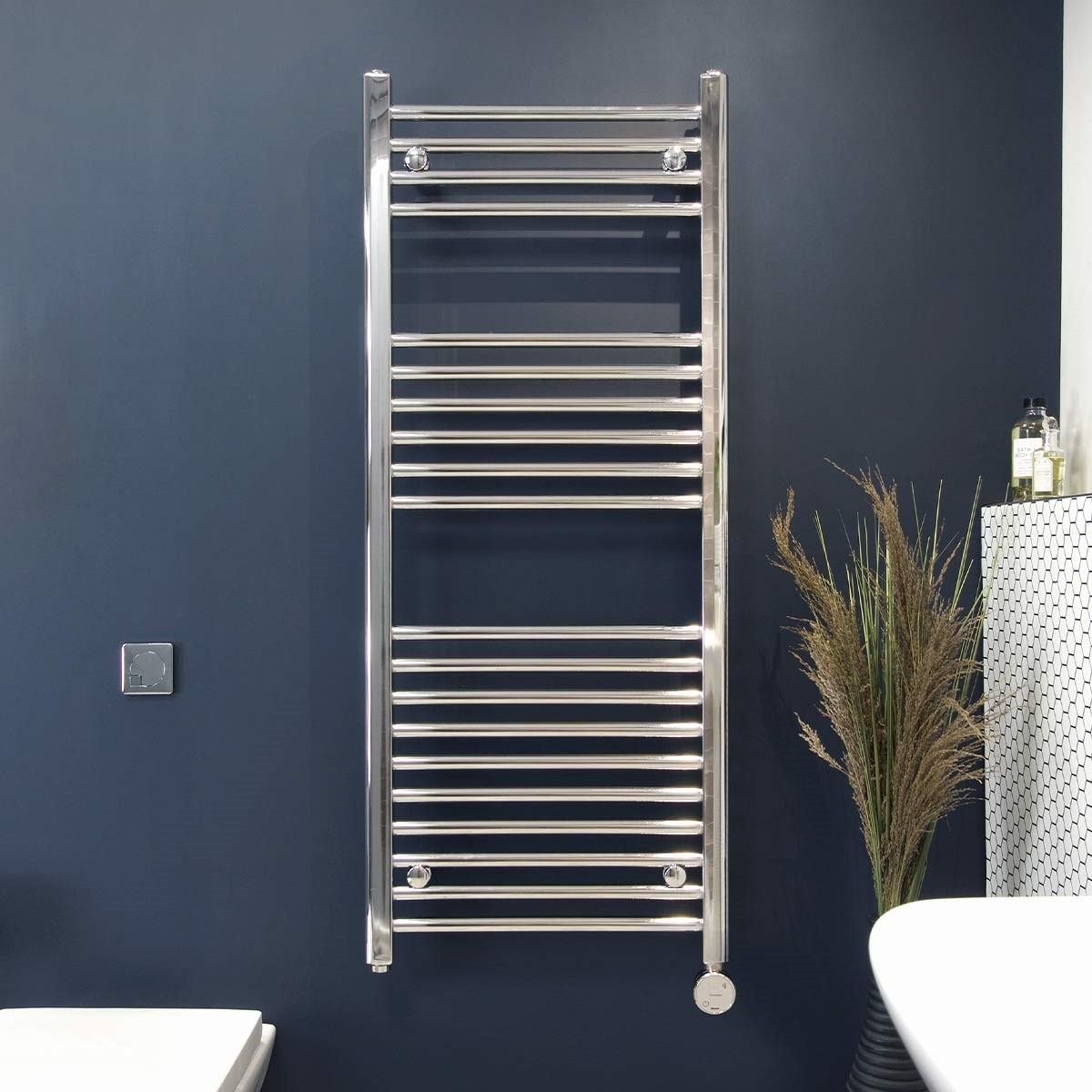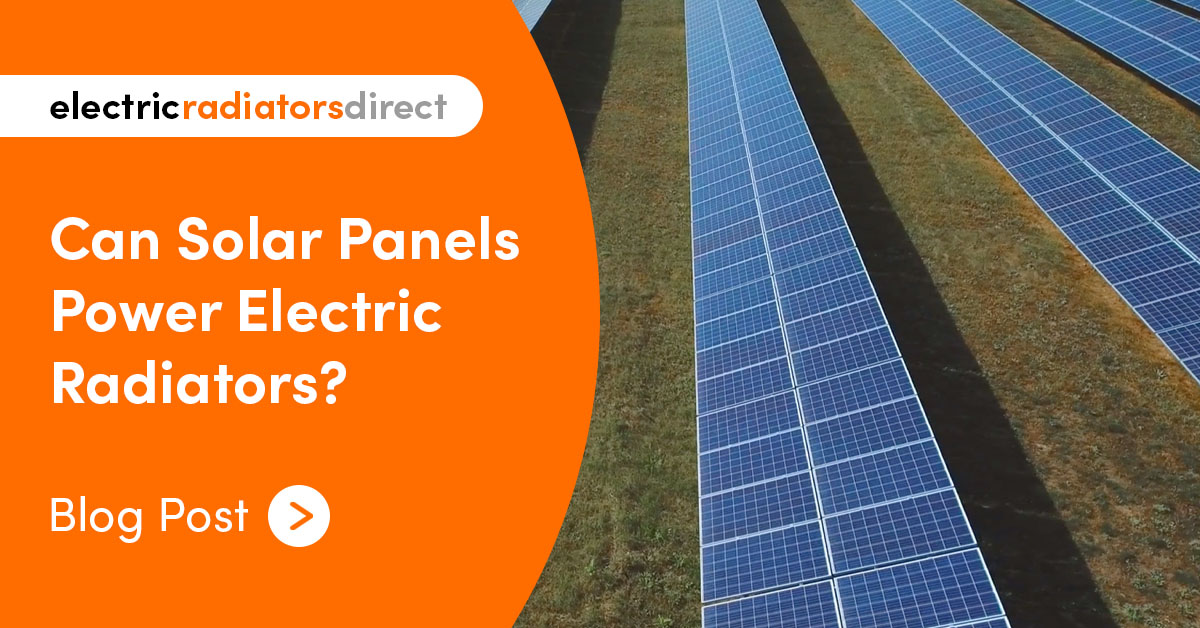

Last updated: February 2024
Imagine a day when heating our homes doesn’t cost the earth and we have access to a ready supply of green energy. For those fortunate enough to have the resources, this utopian vision of the future can happen today with the help of self-generated energy. Whether using solar or wind, some households have the potential to generate enough power for their heating needs for most of the year, essentially providing them with free warmth that’s completely carbon neutral. If low-cost heating takes your fancy, we’re taking a look at why electric radiators are perfect for pairing with solar panels and how they work together…
Check out our video! We look at what it means to be truly carbon neutral and how electric radiators and renewable energy make the perfect pair.
How can I use electric radiators with solar panels?
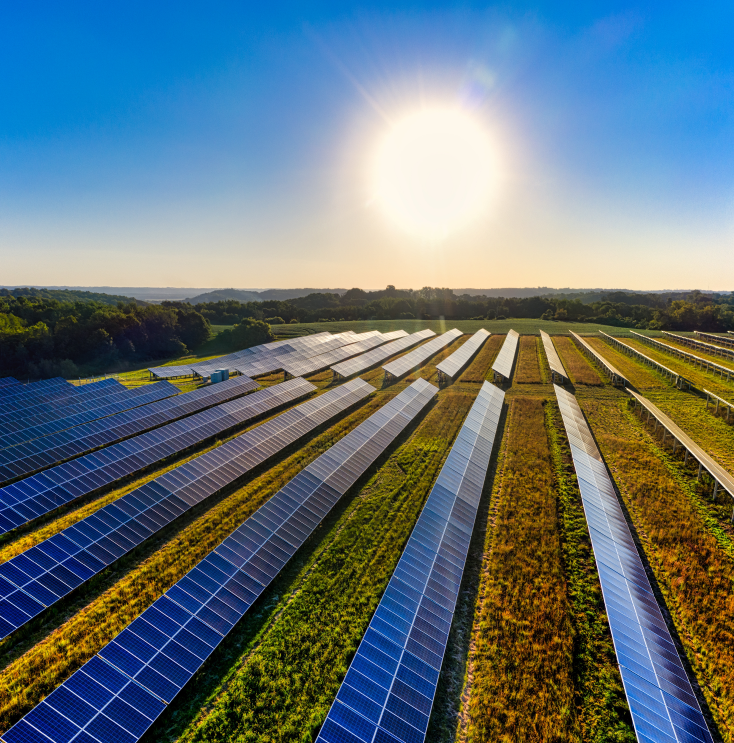

The energy generated from photovoltaics (solar PV) can be paired with any electrical appliance so works equally well with electric radiators. To capitalise from this renewable energy, you’ll first need to have an installer assess whether solar PV is the best system for your property. When and if the solar array is installed, you’ll also need an inverter to convert the DC electricity generated into AC so that it can be fed back into the mains of your home. After that, you can use your green energy to run your washing machine, charge your phone and power your heating – the sky’s the limit.
Can I power all of my electric radiators with solar PV?
This is an important question to ask; after all, nobody would want to invest so heavily in a renewable energy source only for it to produce an underwhelming return on savings. So, let’s look at an electric heating use-case scenario for a standard semi-detached house using solar PV.
How many electric radiators could you support on a solar PV system?
For a family of four, a 5kW solar array is typically recommended, though this can vary depending on property type, location and a number of other factors. But, for the basis of this example, let’s assume we’re using a 5kW array.
In sunny southern areas of the UK, a 5kW array can generate up to 20kWh on a good day. In this scenario, it’s summertime and we’re getting plenty of that solar energy. Our fictional semi-detached doesn’t need much heating at this time of year but let’s say we’re planning to run our electric radiators for around 5 hours a day just to take the chill off during the mornings and evenings.
Here’s the layout of our property:
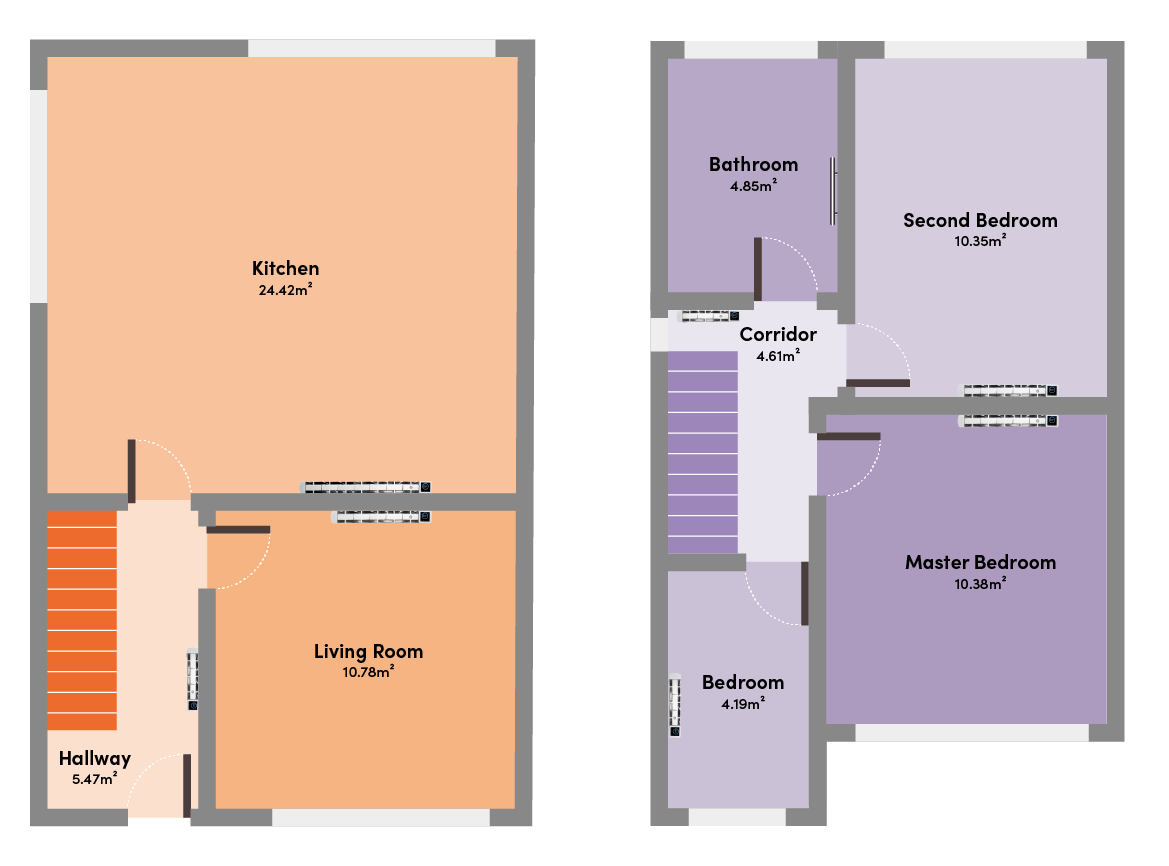

We’re going to use the following heaters for this calculation:
- 3 x 500w Ecostrad iQ Ceramic radiators, installed in the hallway, landing and box bedroom.
- 3 x 1000w Ecostrad iQ Ceramic radiators, installed in the living room and two larger bedrooms.
- 1 x 2000w Ecostrad iQ Ceramic radiator, installed in the spacious kitchen diner.
- 1 x 400w Ecostrad Fina-E Bluetooth electric towel rail in the bathroom.
To calculate how much energy these heaters would use per kilowatt hour (kWh), we need to convert their wattage into kW and then multiply that by the number of hours we plan to use them.


So, for example, if we wanted to find the kWh value for the three 500w heaters over a 5-hour period, we would calculate it like so:
(0.5kW x 5) x 3 = 7.5kWh
Sounds quite high doesn’t it? That’s because it’s not taking into account that these are thermostatically controlled heaters. In reality, these heaters would probably only switch on for 15-20 minutes at a time every hour to top-up temperatures in a well-insulated property. If we assume that they’re only drawing power a third of the time, we’re actually looking at 2.5kWh of use for these three heaters.
If we use that same calculation on all of the heaters, we get the following values:
3 x 500w radiators = 2.5kWh
3 x 1000w radiators = 5kWh
1 x 2000w radiator = 3.3kWh
1 x 400w towel rail = 0.7kWh
Total kWh = 11.5kWh
As you can see, that’s a little over half of a day’s generation for a 5kWh solar array working optimally, leaving plenty left for the rest of your appliances.
Does this mean I never have to pay for my heating?
Sadly, not quite. There will likely be occasions where you’ll have to pay for your heating the old-fashioned way because your renewable systems won’t be working in optimal conditions. It does mean, however, that you won’t have to pay for your heating for a large chunk of the year.
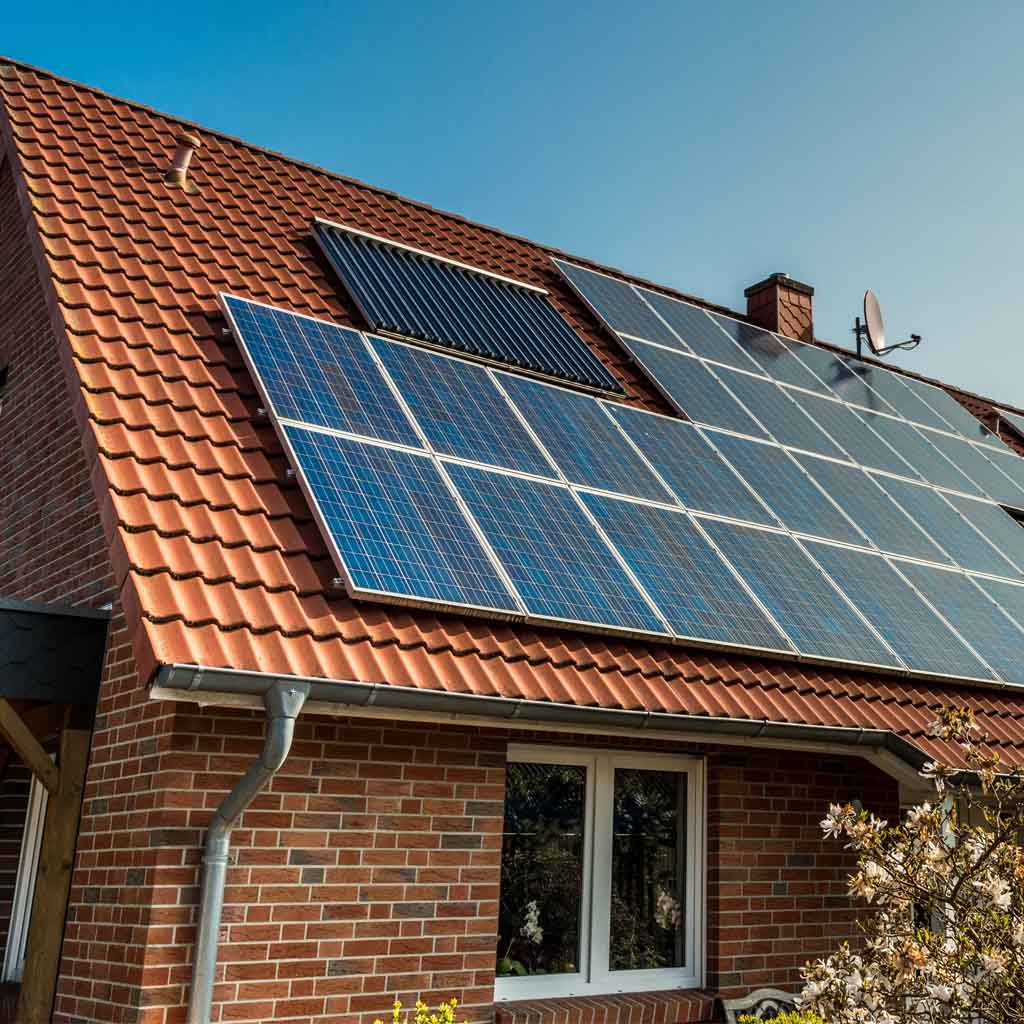

We’ve used a very specific scenario in the example above but there are lots of other factors that you’ll need to consider when pairing renewables with electric radiators. Your property location and system of generation can have a big effect on how much power you’re able to produce. In areas of the UK that see less sun, a solar PV system will generate less electricity over the course of the year; similarly, locations that see less wind will find that turbines don’t reach optimum levels of generation.
In our calculations, the property in question is insulated enough that the heating only comes on a third of the time. This may not be the case for older properties with poor thermal retention. But these are all things you can discuss with a heating engineer and your renewables installer. They’ll be able to make recommendations to suit your property and make sure it’s maximising its full potential.
How do you heat hot water in an all-electric house?
If you’re using electric radiators throughout your property, you might be wondering how to heat your water. A lot of homes with electric heating make use of immersion heaters to provide them with the hot water they need, which may or may not be augmented by a solar water heating system. A bank of solar thermal tubes is an efficient way to enjoy free heated water throughout a large part of the year. However, due to their size and cost, they may not be a viable option for every property.
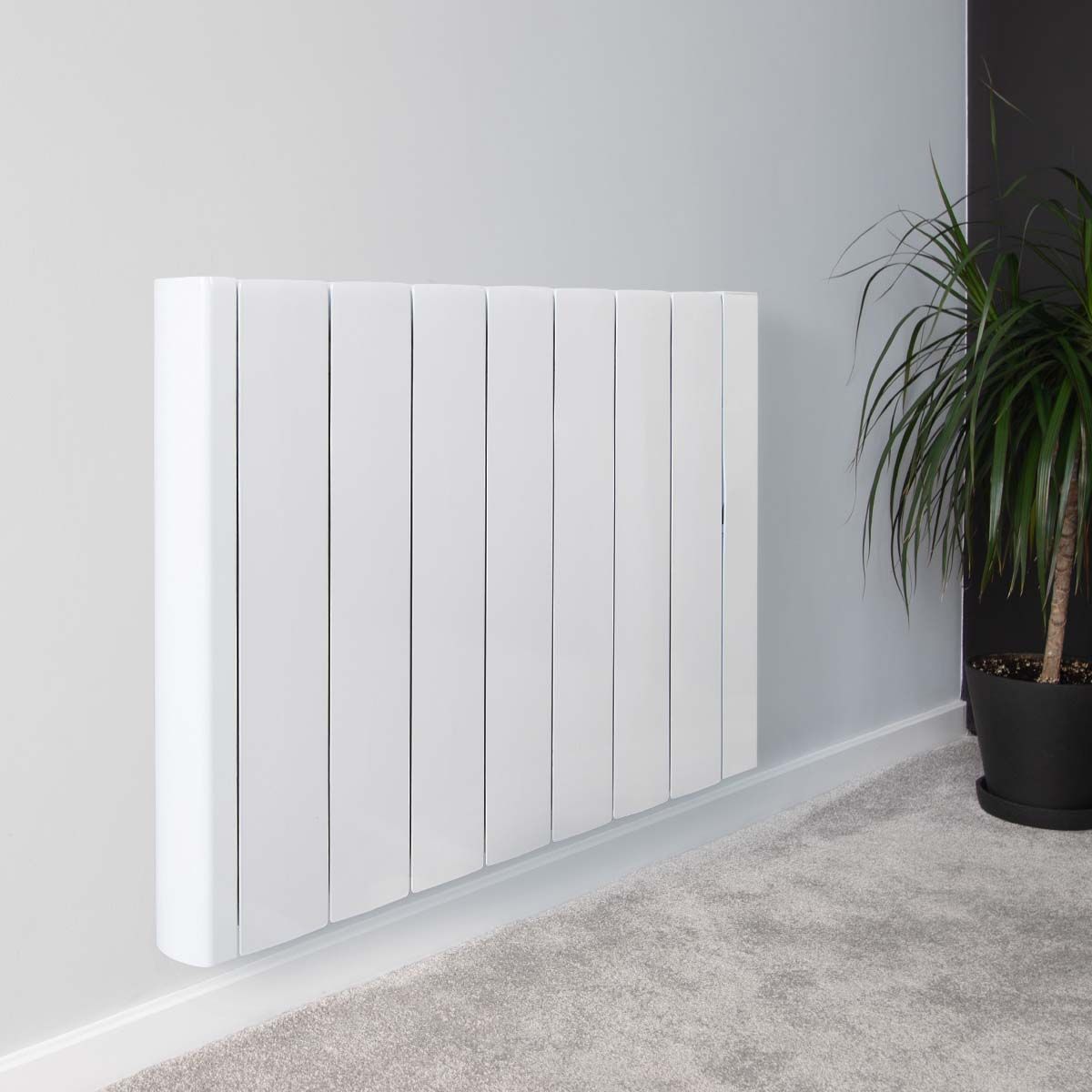

Ecostrad iQ Ceramic: the perfect accompaniment to your eco-property
Boasting an array of features that emphasise its integration into your home, the iQ Ceramic takes heating to the next level. Its high-heat retentive ceramic body provides long-lasting warmth, and its WiFi compatibility means you can pair it to the Ecostrad Ecosystem app and Alexa/Google Home assistant for ultimate convenience. With a single tap of your smartphone or voiced command, you can set weekly schedules, heating boosts and eco modes. Our most efficient electric radiator yet, fit it in minutes with simple DIY-installation and purchase the radiator feet for ultimate portability. For optimal warmth all year round, look no further than the iQ Ceramic.
Is electric heating 100% efficient? Spoiler alert: yes! Check out this video for more info.
Go green with Electric Radiators Direct
We have all the heating options you could ever need to match up with your renewable energy. Whether you’re looking for a towel rail, infrared panel or patio heater, we have the ultimate range at the best price. A lot of our products also support smart WiFi control to help you intelligently manage your consumption, so shop with us today and let us help you on the way to low carbon living!
Key learnings
- Solar panels can power electric radiators, along with any other electric appliance, providing your home with self-sustaining, carbon neutral energy.
- Your first step is getting your property assessed by an installer to make sure solar PV is suitable, then you’ll need an inverter to convert your electricity.
- You could also use an immersion heater boosted by a solar water heating system to provide your home with heated water.
- If your home is well-insulated, the amount of energy left over after heating your electric radiators will be more than enough to power other things, like your phone charger and washing machine.
- Solar panels will reduce your heating bills during the colder months.
- Depending on how much sun your property gets, you will get cheaper heating throughout a good chunk of the year.






